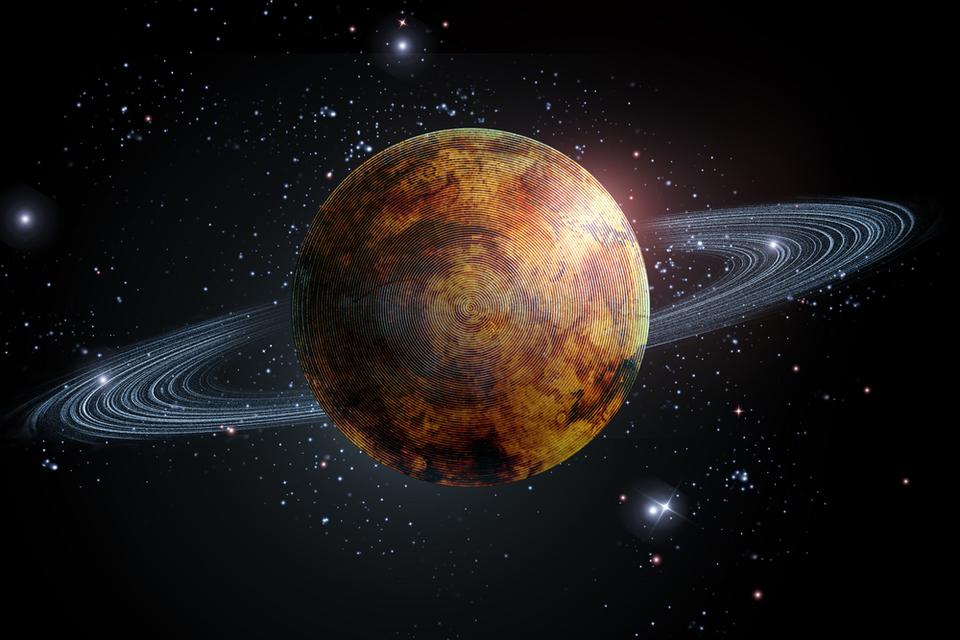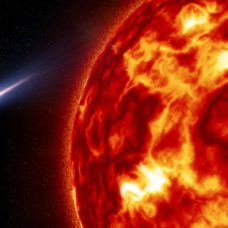After more than a decade in space, NASA’s Cassini probe will be meeting its end in a few weeks, right after completing its last Saturn mission.
On September 15th, the Cassini probe that was sent by NASA into space over ten years ago will complete its final mission: diving straight to Saturn’s atmosphere to be destroyed.
Yes.
You read it right. NASA is all set to destroy one of its most important spacecraft ever launched. The plan might sound upsetting, but the U.S. space agency has some good reasons to do it.
“The mission has been insanely, wildly, beautifully successful, and it’s coming to an end in about two weeks.”
Curt Niebur, a Cassini program scientist, was saying the above quote on a telephone conference call with reporters from NASA’s Jet Propulsion Laboratory in California.
#Cassini is nearing the end of its final mission. #NASA all set to destroy it in Saturn!Click To TweetApparently, Cassini probe’s suicidal mission is part of a preventive measure to save Saturn’s icy, watery moons believed to be harboring alien life from being contaminated.
Before we bid Cassini farewell, let’s take a look back at the spacecraft’s interesting space journey.
Cassini Probe: History and Achievements
Cassini-Huygens or the Cassini probe is an unmanned spacecraft specifically created for the Saturn mission. It is considered as a Flagship-class NASA–ESA–ASI robotic spacecraft and the fourth space probe to visit said planet.
Among the many spacecrafts sent to Saturn, the Cassini probe was the first to enter its orbit.
Cassini’s development began in the 1980s. It has a Saturn orbiter (Cassini) and a lander (Huygens) for the moon Titan. The space probe was named after two renowned astronomers, Giovanni Cassini who discovered Saturn’s ring divisions, and Christiaan Huygens who discovered the moon Titan.
The Cassini-Huygens probe was finally launched on October 15th, 1997, and after seven years of space traveling, it entered Saturn’s orbit on July 1st, 2004.
On December 25th, 2004, Christmas day, the Huygens separated from Cassini and made its way towards Saturn’s moon, Titan. On January 14th the following year, the lander successfully landed on the said moon.
After the separation, the Cassini probe spent the following years studying Saturn and relaying information back to Earth.
Cassini was equipped with multiple instruments for gathering data in Saturn. Some of which includes:
- Cassini Plasma Spectrometer (CAPS) for measuring energy and electrical charge of particles.
- Cosmic Dust Analyzer (CDA) for measuring the size, speed, and direction of tiny dust grains near Saturn.
- Composite Infrared Spectrometer (CIRS) for measuring the infrared radiation coming from objects to learn about their temperatures, thermal properties, and compositions.
- Ion and Neural Mass Spectrometer (INMS) for analyzing the charged particles and neutral particles near Titan and Saturn.
- Imaging Science Subsystem (ISS) for capturing images in visible light, as well as infrared and ultraviolet images.
- Dual Technique Magnetometer (MAG) for measuring the strength and direction of the magnetic field around Saturn.
- Radar for mapping Titan’s surface.
- Magnetospheric Imaging Instrument (MIMI) for capturing images and other data about the particles trapped in Saturn’s huge magnetic field, or magnetosphere.
The Cassini probe has the capability to transmit data in many different telemetry formats. It is considered as one of the most critical subsystems of the spacecraft, for without it, it won’t be possible to send any data back to planet Earth.
A Plutonium energy source also powers the spacecraft since the long distance of Saturn to the Sun makes it impossible to gather solar energy.
Some notable achievements of the Cassini probe include:
- The Jupiter flyby where Cassini made many scientific measurements of the planet and sent over 26,000 images back to astronomers on Earth.
- The testing of Einstein’s general theory of relativity using the radio waves transmitted from the Cassini probe.
- Capturing images of the moon Phoebe.
- Making the first ever full orbit of planet Saturn.
- Capturing spokes in Saturn’s rings, referred to by astronomers as the ‘Spoke Phenomenon.’
- Discovering lakes of liquid hydrocarbon in Titan’s northern most part.
- Capturing Saturn’s ‘The Great Storm’ on 2010.
- Capturing Earth’s first long-distance shot where NASA scientists asked the public to smile and wave to the skies.
Cassini Probe: The Grand Finale
Cassini probe’s final mission will involve a last 22 ‘farewell dives’ that will take it within the rings of Saturn and close passes of the planet.
NASA referred to the mission as the Grand Finale. It began on November 26, 2016, when the spacecraft performed a Titan flyby that took it to the gateway of F-ring orbits. On April 22nd of this year, Cassini made its final flyby of the Titan before entering the gap between Saturn and its inner ring days on April 26th due to a change in orbit.
Cassini will enter Saturn’s atmosphere on September 15th. Aside from running low on fuel, the decision to destroy the probe is imperative to ensure protection and prevent biological contamination of any of the moons of Saturn believed to sustain alien life.
The Cassini probe will provide near real-time data on the atmosphere of Saturn until losing contact with Earth. Earl Maize, an engineer at NASA, said that the spacecraft would take whatever readings it can during its final dive into the clouds of Saturn.
“We will have repurposed Cassini into an atmospheric probe,” Maize went on to say, “and we’ll have it broadcasting data back down to the very, very last minute.”
NASA scientists said that the Plutonium would be the last part to melt as the Cassini probe plows through Saturn’s atmosphere. This is because the plutonium is sealed within shells made of super tough and precious element called iridium. The shells were designed to contain plutonium in case Cassini accidentally re-entered Earth during its launch.
“It’s just going to melt,” Maize said, referring to the iridium shells, “It is going to be so hot at Saturn that it will quickly dissipate. I think any possibility of it escaping is nil.”



















it’s the best safe end to an incredible mission